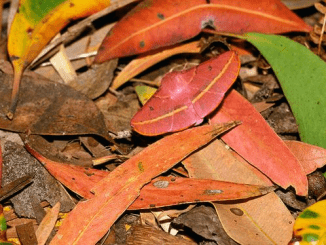In a startling medical case that has captured global attention, doctors in Shanghai, China, made a remarkable discovery – a fetus growing inside the skull of a one-year-old girl. This rare and complex condition, known as fetus in fetu (FIF), is an extraordinary phenomenon that challenges our understanding of human development.
The discovery of this fetus within the child’s skull presented the medical team with a daunting challenge. Not only was the condition itself highly unusual, but the implications for the young patient’s health and well-being were profound. As the doctors delved deeper into the case, they uncovered significant developmental issues, including delays in the child’s motor skills and speech development.
This case serves as a stark reminder of the gaps in our medical knowledge, and the critical need for continued research and innovation in the field of developmental biology. As the doctors work to understand and treat this remarkable condition, the world watches with a mix of fascination and concern, eager to learn more about this extraordinary medical mystery.

Initial Symptoms and Diagnosis
The parents of the one-year-old girl noticed her developmental delays and brought her to the hospital. Doctors performed a head CT scan, which revealed a large mass in her cerebral hemisphere. This mass, measuring 13 centimeters in diameter, contained internal bone structures and had a smooth boundary.
Prenatal Abnormalities

Abnormalities were detected during a 33-week prenatal examination, but an MRI could not provide detailed information due to space occupation in the skull. The girl was delivered via cesarean section at 37 weeks, already showing signs of a large head circumference.
Understanding Fetus in Fetu

Fetus in fetu is a rare developmental anomaly where a malformed fetus is found within the body of its twin. It occurs in approximately one in half a million live births. Typically, FIF is located in the abdomen, but in this case, it was found in the skull. “FIFs remain a mystery,” said study authors Xuewei Qin and Xuanling Chen from Peking University International Hospital, highlighting possible environmental and genetic factors.
Rarity of Intracranial FIF
The rarity of intracranial FIF cases underscores the need for early diagnosis and treatment. Differentiating between FIF and other conditions like teratomas is crucial for effective medical intervention. “Monitoring alpha-fetoprotein levels after surgery can help detect recurrence,” researchers noted.
Surgical Intervention

Given the severe condition, doctors decided to perform a craniotomy, a surgical procedure that involves removing part of the skull to expose the brain. During the surgery, they discovered a malformed fetus with visible limbs, mouth, eyes, and other organs. “Following complete mass resection, mouth, eye, arm, and hand shapes could be observed,” the study reported.
Challenges in Surgery

Despite extensive preoperative examinations and planning, the one-year-old girl experienced uncontrollable seizures post-surgery. She remained unconscious and sadly passed away 12 days after the procedure. The prognosis for such cases is generally poor, with surgical resection being the only curative treatment.
Implications and Research

The discovery of a fetus growing in an infant’s skull is a profound reminder of the complexities and mysteries of human development. This case emphasizes the need for continuous research and advanced medical practices to manage such rare and challenging conditions effectively.
Case Study Reflections

This case adds to the less than 200 reported instances of FIF in medical literature. It highlights the importance of advanced imaging techniques and prenatal care in detecting and managing such rare conditions. The doctors’ experience in Shanghai offers valuable insights into the complexities of diagnosing and treating FIF.
The strange case of the fetus in the skull has captivated the medical community and the public alike. This extraordinary phenomenon challenges our understanding of human development and underscores the need for continued research and innovative medical interventions. As we strive to unravel the mysteries of rare conditions like fetus in fetu, we are reminded of the resilience and determination of the human spirit.


